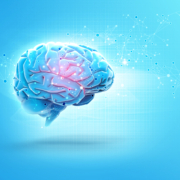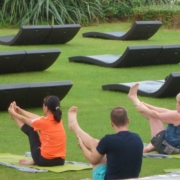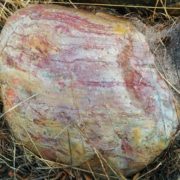5 Intention-setting Ideas for Luvin’ Up Your Brain
June is Alzheimer’s and Brain Awareness Month
The Alzheimer’s Association® suggests people around the world wear Purple this month AND continue to exercise their brains to fight Alzheimer’s disease. Research into the causes of cognitive decline, including the diagnosis of Alzheimer’s Disease, is ongoing because scientists still don’t fully understand the underlying process in most people. Some of the latest research has revealed new evidence that a viral species, particularly the herpes viruses, may play a role in the biology of Alzheimer’s. As with so many other human physical diseases, people worry about their risk of developing Alzheimer’s if there is a family history of the disease. However, a family history doesn’t mean you will develop it too.
Several years ago, I began participating in an Alzheimer Prevention Trial (APT) online to support the ongoing efforts to figure out the underlying causes of this disease and, more recently, am participating in a study through UCI as well. I’m hopeful that my participation will bring more light into the unknown, so we have more information to make choices to support the long-term health of our brains.
In the meantime, below are some ideas to reinforce the health of your brain, trusting that the human physical body is constantly working towards optimal functioning or homeostasis:
- Mental Health. Research has shown that stress, anxiety and depression have a link to cognitive decline. Therefore, if you experience these symptoms, consider letting someone know and ask for support. One of the silver linings of the pandemic has been an increased awareness of how critical the health of our mental selves is and we are all susceptible to the traumatizing effects of our world. Anxiety and depression are natural adaptive human responses to threats to our well being, so we are all in this together!
- Socialize. Feeling isolated or having feelings of loneliness have also been linked to cognitive decline. Research has shown that people with no social connections were 2.37 times more likely to experience cognitive decline when compared to people who had five to six connections. So how might we increase our social circle? Consider engaging in social activities that bring meaning or purpose into your life. Perhaps connecting through your local community or neighborhood that organize such group activities. Or volunteer at your favorite non-profit organization.
- Read. Consider adding reading to your daily ‘To Do’ list. You might even sign up for a course at your local community college or center, whether in-person or online. Another option might be to start – or join – a book club!
- Lifestyle Changes. Research has shown that there are several lifestyle changes that are options to protect and enhance our brain’s health. Stopping smoking is one. Exploring ways to include brain-healthy foods into your daily meals is another. Daily physical activity is another as it increases blood flow to the brain. If you ride a bicycle as part of your healthy life style routine, consider adding a helmet to your outfit, as head injuries from falls can raise your risk of cognitive decline.
- Learn something new. Research has shown that novelty is an important aspect of brain health. So consider challenging yourself in new ways. Some simply ideas to consider trying might be to listen to a different genre of music, take a different way to work or the store, learn a new skill, or rearrange the furniture in one of your rooms. Novelty has been shown to enhance learning and memory, creativity and happiness, so why not give it a try!





